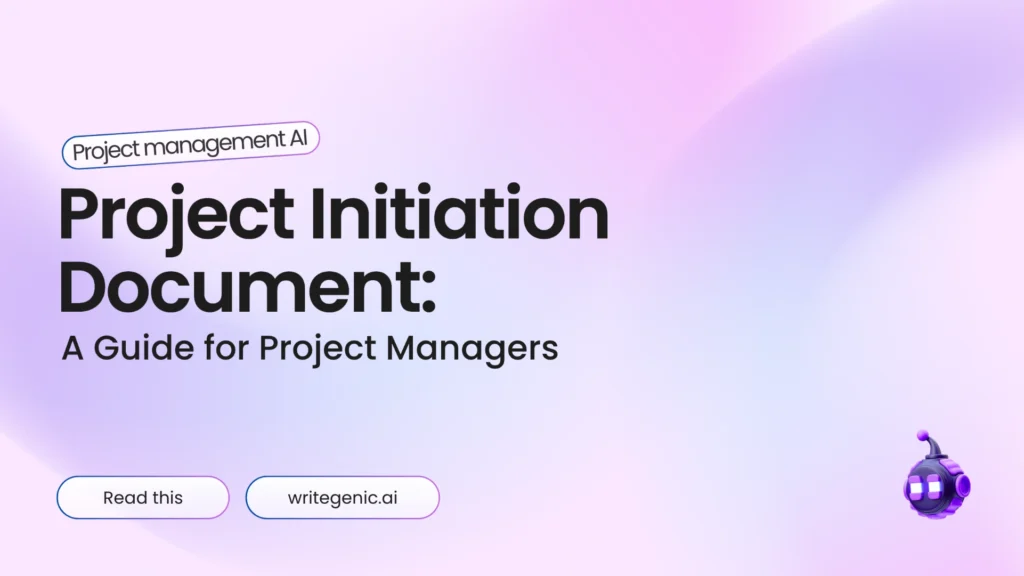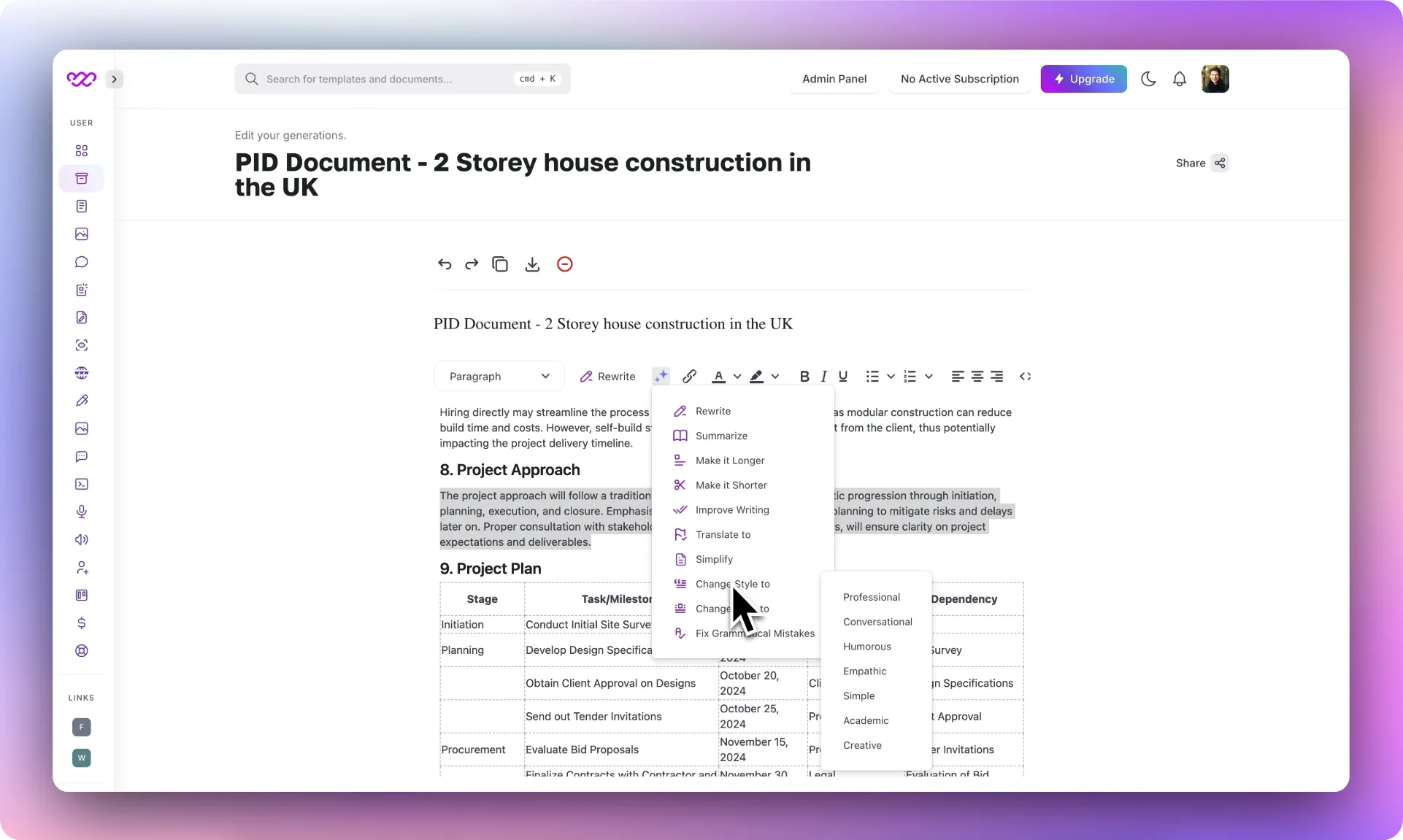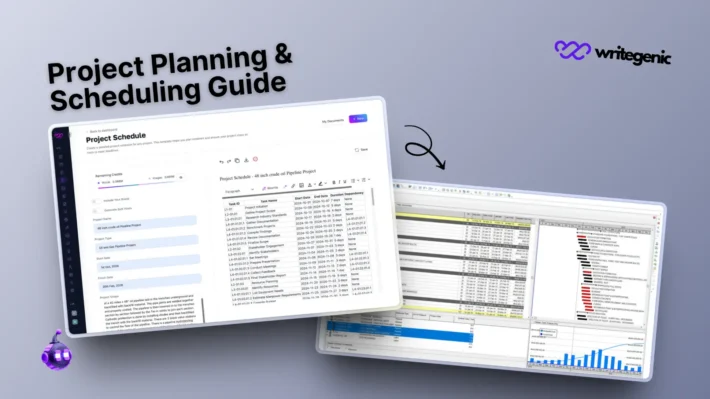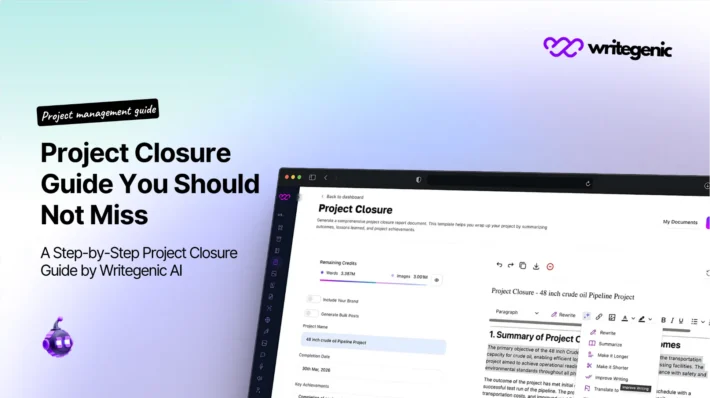Project Initiation Document: A Guide for Project Managers

The Project Initiation Document is a key file to use during the initiation process of any project where there is a need for clarity and alignment. This initial blueprint contains all goals and scopes, stakeholders, and risks. Be it working on a single team, or tackling a full-scale project, to become an expert in the project management initialisation process, one needs to begin with a proper PID.
Here, we are going to know what a PID is, its relevance, and how you can develop a PID to make your project successful.
Table of Contents
What Is a Project Initiation Document (PID)?
A PID project initiation document is an official agreement, which describes important facets of a project prior to detailed planning. It includes the purpose of the project, the scope of the project, the objectives of the project, roles, deliverables, risks, budget and schedule of the project. The PID is usually the very first official document produced in the project management initiation process in most organizations.
You can even imagine it to be the foundation to have them all on the same page, beginning with stakeholders, through to team members.

Why Is the Project Initiation Document Important?
Project initiation document is critical in that it renders order and clarity at the project initiation phase. This is why it is important:
- Clarifies Objectives: It sets a mark of what success will be considered in the project, and why it is being carried out.
- Ensures Stakeholder Alignment: Stakeholders have agreed on roles, the scope, and expectations.
- Establishes a Baseline: It acts as a benchmark during the lifecycle of the project.
- Improves Risk Management: Identifying the potential challenges early assists in planning mitigation.
Teams that fail to prepare a PID adequately are prone to misalignment and confusion in the implementation process.
Key Components of a PID
An efficient project management project initiation document must contain the following panels:
1. Project Objectives and Scope
Make the aims of the project clear and scope of that project. This prevents procrastination and scope creep in the future.
2. Business Case and Justification
Discuss the reason behind the undertaking of a project. What is its value? How does that fit into business objectives?
3. Roles and Responsibilities
Name project stakeholders, team members, and their roles. Who is the sponsor of the project? Who makes the approvals?
4. Project Deliverables
Write down the important outputs that the project would have to deliver including products, reports or services.
5. Project Timeline and Milestones
Add some key stages, milestones, and the projected date of completion. The high-level Gantt chart or roadmap can be used here.
6. Resources and Budget
Detail the budget, resources needed, and how they will be funded. This section provides transparency, and thus, there are no surprises.
7. Risks and Mitigation Plans
Record possible threats and create a backup plan. The risk planning in the PID eliminates susceptibility in future.
How to Create a Project Initiation Document: Step-by-Step
PID is not a complicated thing to create. Just do it in the following way:
Step 1: Define the Project Background
Begin with a short introduction. What is the need to have the project? What is the problem that is solved?
Step 2: Set Scope and Objectives
Write in detail about project limits. Make a list of what is included, what is not. Next, identify measurable goals.
Step 3: Identify Stakeholders and Assign Roles
Identify all stakeholders and outline their roles. It can be useful to utilize a RACI chart.
Step 4: Plan Timeline and Resources
Approximate time and effort needed. Find milestones and name persons whose ownership each has.
Step 5: Conduct Risk Assessment
Think proactively. How can this go wrong? What will be your response?
It is a systematic process of project start-up that makes your PID meaningful and action-oriented.
Common Mistakes to Avoid in Project Initiation Documentation
Even a senior project manager could easily slip into some traps. Do not make these mistakes:
- Unclear Objectives: Never leave the objectives unclear.
- Incomplete Stakeholder List: leaving out major stakeholders results in miscommunication.
- Unrealistic Scope: Be sensible so that you do not run out of steam or the scope overshoots.
- Ignoring Risks: There are risks to every project, recognise them.
- Lack of Buy-In: The PID is a piece of paper without the approval of the stakeholders.
The level of detail and teamwork required in the initial stages of project initiation documentation are considered imperative.
Project Initiation Document Template
Here’s a basic outline you can follow to create your own Project Initiation Document.
| Section | Description |
| Project Overview | Brief background and purpose |
| Objectives | SMART project goals |
| Scope | What’s in and out of scope |
| Deliverables | Tangible outcomes of the project |
| Stakeholders | List of all involved parties |
| Timeline | Key dates and milestones |
| Budget | Estimated project costs |
| Risks | Anticipated challenges and mitigation plans |
| Approval Signatures | Final sign-off from key stakeholders |
A standardized template is time-efficient and aids in standardizing quality in different projects.
Use Writegenic AI to create one within seconds. Just enter the required information, click generate and it is done within a few seconds.

Example of a Project Initiation Document
Here’s a simplified example:
Project Title: CRM System Upgrade
Objective: Improve customer data tracking and automation.
Scope: Upgrade to latest CRM version, migrate existing data, train users.
Timeline: June 15 – August 30
Budget: $20,000
Stakeholders: Project Sponsor (Jane Doe), Project Manager (John Smith), IT Team
Risks: Data loss during migration – mitigation: backup procedures.
Approval: Signed by sponsor and key stakeholders.
Through this example, the clear and professional picture that a good PID makes is evident.
Conclusion
An effective pid project initiation document is like a roadmap, it puts your team, stakeholders and objectives in line at the very start. It makes ambiguous thoughts practical and makes sure that all are directing in one direction.
A project manager who wants to enhance his initiation process should begin the process with a good PID. That is not merely documentation, that is the ground of your project.
FAQs
What is the difference between a PID and a project charter?
Project charter tends to be a short high-level document granting authority to a project. A PID is more elaborated and contains scope, risks, and deliverables.
Who is responsible for writing the PID?
The project manager normally writes the PID. However, it is developed in partnership with the sponsor of the project, the main stakeholders, and the team leaders to establish accuracy and commitment by the parties involved.
When should a PID be created?
PID must be prepared in the initial stage of the project not with some specific planning or implementation. It acts as a condition to the approval of the project and its assigned resource.
Are there tools to help create a PID?
Yes. Writing and creating PIDs can be simplified by using tools such as Writegenic AI, Asana, ClickUp, or MS Word with templates. These tools can be used to help maintain a high degree of consistency, teamwork, and clarity when initiating project management.
Can a PID be used in Agile project management?
Yes. Although Agile takes the approach of flexibility and lightweight documentation, a simplified PID could be useful to establish an initial scope, define stakeholders, and explain goals particularly within a hybrid Agile environment.


